The PlayStation One is the console that established the Sony brand in the gaming world. It was able to siphon the gamers away from Nintendo, and one of the reasons is that a lot of JRPGs are PlayStation exclusive.
Looking from some classic RPG action? Read on as we hand-pick and review the best games on the system.
If you don’t own a PS1 and want to play some of these older RPGs, take a look at our PS1 emulators article so you can play these on modern systems.
1. Final Fantasy VII

Final Fantasy 7, released in 1997 for the PlayStation, was a landmark title in the RPG genre and a fan-favorite in the long-running Final Fantasy series. It was the first FF game on the original PlayStation and marked a departure from the medieval Europe setting of its predecessors. The game was praised for its stunning FMV cinemas, expansive world to explore, edge-on-your-seat pacing (although admittedly bloated and out-of-focus in parts), and great characterization.
The graphics, although dated by today’s standards, were considered cutting-edge for their time and showcased beautiful pre-rendered backgrounds and detailed in-game spells and attacks. The over-hour of FMV scenes in the game may not manage to impress modern audience, but they are expertly well-placed in crucial moment.
The gameplay introduced the innovative Materia system, where stones called materias could be collected and equipped to add special abilities to weapons or to cast magic spells. Materias had various effects and were divided into categories. The number of materia combos possible was aplenty, making the system a standout feature of the game.
Another new addition was the Limit Break system that appeared in subsequent Final Fantasy titles in various forms like Trance in Final Fantasy IX, Overdrive in Final Fantasy X, and Quickenings in Final Fantasy XII, where each character had unique special skill that has varied effects.
Final Fantasy VII’s storyline followed the leader of a terrorist group, Cloud Strife, as he navigates a world facing an impending meteor strike. He stumble upon a diverse cast of characters that includes a wolf-like creature in Red XIII and a robotic cat riding another robot in Cait Sith.
The soundtrack of the game was widely acclaimed, with the music being described as moving, mood-setting, and simply wonderful. The various tracks, including the battle music, boss music, and town music, all played a crucial role in setting the tone of the game. The music was considered one of the highlights of the game, with some tracks like Aeris’ theme and Sephiroth’s music, being particular fan-favorites.
Final Fantasy 7 has been widely regarded as one of the best RPG’s on the PlayStation, and even one of the best RPG’s of all time. It has been praised for its deep and involving storyline, immersive gameplay, and outstanding soundtrack. While some players may not appreciate the outdated graphics, the majority of gamers still consider FF7 a classic title that should be experienced by all RPG fans.
If you are a young person and find the graphics intolerable, the remake is incredibly good-looking with some inconsistencies in textures in some parts. The battle system is revised entirely and the scope is much lesser in the remake as it revolves only in the beginning parts of the game.
2. Suikoden II

Suikoden II takes place in the same world as the first Suikoden, three years after the events of the first game. While you can play Suikoden II without playing the first game and still enjoy the greatness of it thoroughly, there are certain bonuses that can be unlocked by playing the first game and transferring over the data to this sequel.
Suikoden II follows the journey of an orphan named Nanami, who is left alone when her childhood friend Jowy and her brother, the player-named hero, join a youth military corps. They leave to defend their homeland, the Highland Kingdom, against their neighboring state, the Jowston League of City-States. The three young people will learn that life is not as simple as they thought it would be.
The combination of modern war opera and intimate, humanistic realism is what makes Suikoden II truly remarkable. Unlike its predecessor, Suikoden, where the writers seemed to have set out to tell a colorful war story and stumbled upon a few universal themes along the way, Suikoden II was designed to bring the timeless themes of war to life through carefully measured and balanced pacing and character development.
The story events in Suikoden II are expertly paced and focused. The majority of the game is filled with a succession of dramatic developments that will keep players engaged. Players can race through the story, devouring each plot point like chapters in a book. Alternatively, they can take their time, and assemble a party from the nearly 100 characters that become playable. Players can also wander the world, fight monsters, explore dungeons, play mini-games like the amazing cooking mini-game, gamble, or collect rare items.
The world of Suikoden II is beautifully designed with an organic and pleasing look and sound. The environments and backgrounds are heavily influenced by ancient art, with many of them featuring the shading and texture of classical Chinese landscape paintings. The music in the game also captures the essence of the world, with some of it featuring South Asian tonalities with instruments such as the sitar and tabla. The women warriors in the game wear colorful ethnic robes, and jousters on horseback twirl their weapons as they advance. Although the graphics are mostly two-dimensional, each character is well-animated and has a wide range of stances and body language.
3. Final Fantasy IX
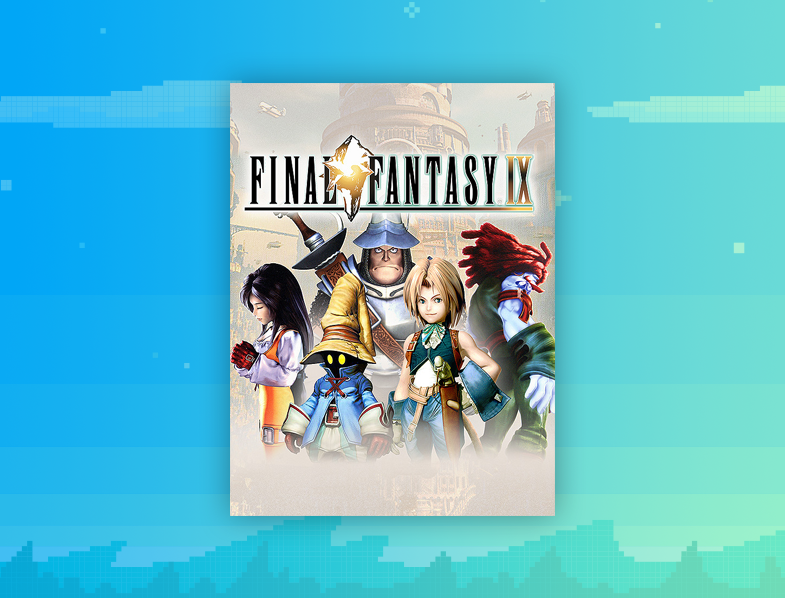
Final Fantasy IX is considered the most charming entry in the Final Fantasy franchise. Its longevity is due to its stunning art direction, traditional gameplay, well-written story, and memorable characters specifically the black mage Vivi.
The game features the active time battle system and a large, varied world full of colorful NPCs and beautifully crafted towns and dungeons. It also features an addictive card game called Tetra Master and a fantastic soundtrack composed by Nobuo Uematsu.
Despite being over two decades old, Final Fantasy IX remains a masterpiece, as this is Hironobu Sakaguchi’s, Final Fantasy franchise creator, favorite Final Fantasy. This is not a surprise because Final Fantasy IX had Square in its its creative peak, with brilliant art direction, and amazing musical score that still puts many modern games to shame.
Admittedly, the speed of the game is molasses slow and may deter more modern gamers. The PlayStation One version of the game did not just age well in terms of battles, but everything else is still fantastic. Emulation does improve the already gorgeous art but the modern re-releases of the game is just a better version for the speed ups and other quality-of-life improvements.
4. Breath of Fire 3
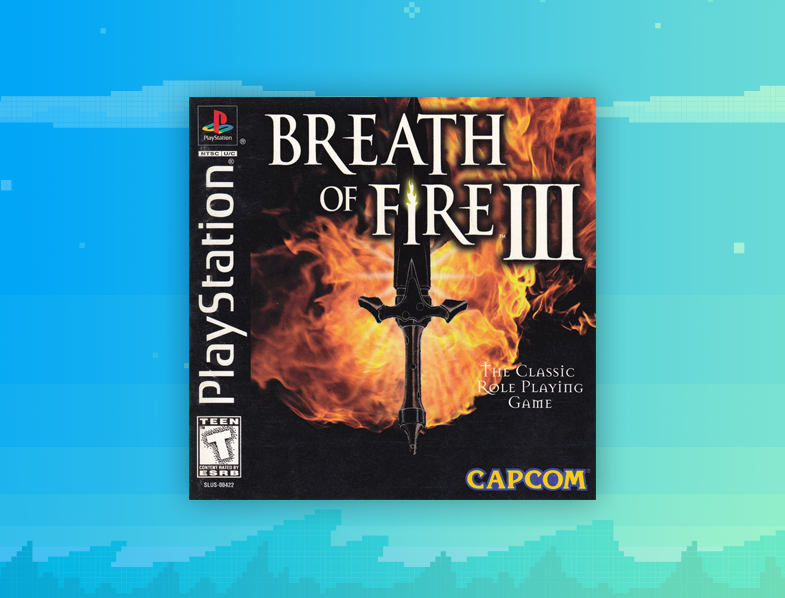
The Breath of Fire series is a beloved RPG franchise that first started during the heyday of the SNES. Though published by Square, it was actually developed by Capcom. The series quickly gained a devoted fanbase and when the third installment was announced for the PlayStation, fans eagerly awaited its release.
Upon its arrival, Breath of Fire III did not disappoint with its vibrant, hand-drawn graphics, diverse color palette, and well-animated characters. The game’s diverse cast of enemies was also a standout feature, with impressive animations and a wide range of designs.
The game’s unique selling point was its variety of gameplay, with innovative features such as the Enemy Skills and Examine commands, Master apprenticeships, and Skill Notes. The system of learning enemy skills and techniques from Masters was engaging and allowed characters to develop differently.
The game had some limitations, such as only being able to learn each skill once and the level tally for mastering techniques not being continuous, but these did not detract from the overall enjoyment of the game. Enjoy this game as much as you can as the sequels have not reached the peak that Breath of Fire 3 accomplished, and also, this franchise is effectively dead.
5. Dragon Warrior VII
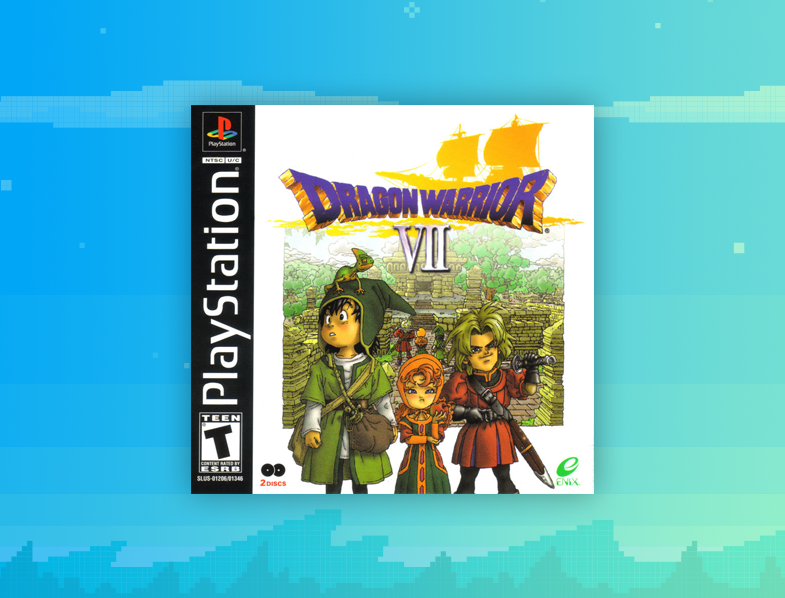
Dragon Warrior VII, the last game on the console in the long-running series, offers a unique blend of classic gameplay and updated features. The game takes place in a peaceful world consisting of only one small island, where the protagonist, a fisherman’s son, and his two friends discover a series of ancient tablets that lead them to the past. The goal is to travel through time and fix historical events in order to restore the world. The game’s story is driven by the events that take place around the characters, rather than deep character development, and the focus is on building and exploring a rich and varied world.
Dragon Warrior VII’s first-person battles and simple text-based special attacks may seem outdated even at that time as games like the Playstation One Final Fantasy titles and Sony’s own Legend of Dragoon had bombastic 3D FMVs, but the combat system is deep and rewarding, with challenging battles that keep the game engaging.
The game’s dungeons are well-designed, with light puzzles that add an extra layer of challenge, while the exploration and side quests provide an endless stream of variety. The game’s timeless look and feel, combined with its deep gameplay and epic quest, make it a must-play for RPG fans.
6. Chrono Cross
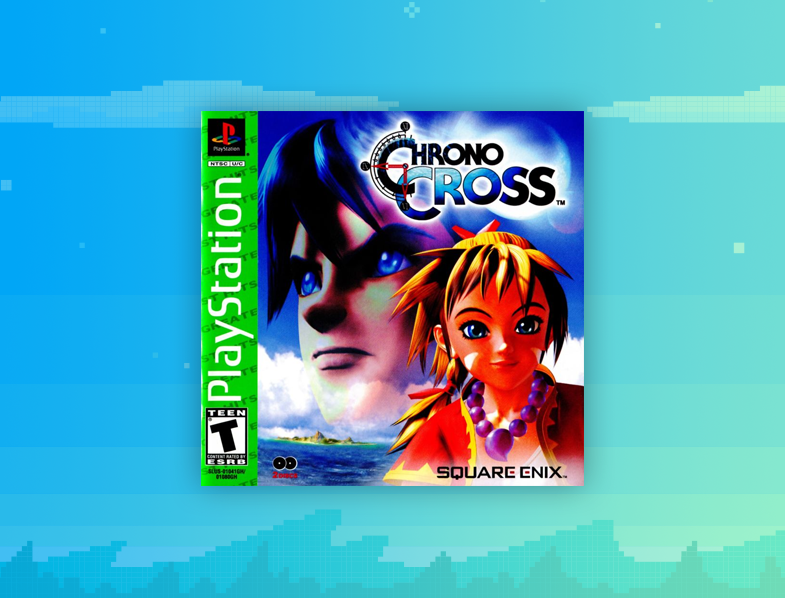
Chrono Cross is widely considered to be inferior to its predecessor, Chrono Trigger. This is largely due to the game’s combat system, which many fans felt was not as satisfying or intuitive as the combat system in Chrono Trigger. Additionally, the game’s level design and puzzle-solving elements were also criticized by some players as being repetitive and boring.
Despite these criticisms, however, Chrono Cross remains a decent game that is well worth playing. The game’s stunning art direction and intricate storyline are enough to make it a standout title in the role-playing genre. Whether you’re a fan of Chrono Trigger or not, if you’re looking for a good RPG with plenty of depth and style, Chrono Cross is definitely worth checking out.
One of the most impressive aspects of Chrono Cross is its art direction. The game is absolutely stunning in terms of graphics and presentation. The world is richly detailed and filled with lush, colorful environments that are a joy to explore. The character designs are also well-crafted, with each character having a unique look and personality that helps to bring the world to life. The game’s musical score is also noteworthy, with a collection of beautiful and memorable tracks that help to enhance the overall atmosphere of the game.
It’s exotic core battle system, that being the Stamina, the Field Effect, and the Level Cap systems, make the game not necessarily complex but needlessly complicated. It would have been saved when the systems in place make or break the fights, but mostly they do not, as Chrono Cross has very accommodating difficulty even for a mainstream JRPG.
7. Grandia
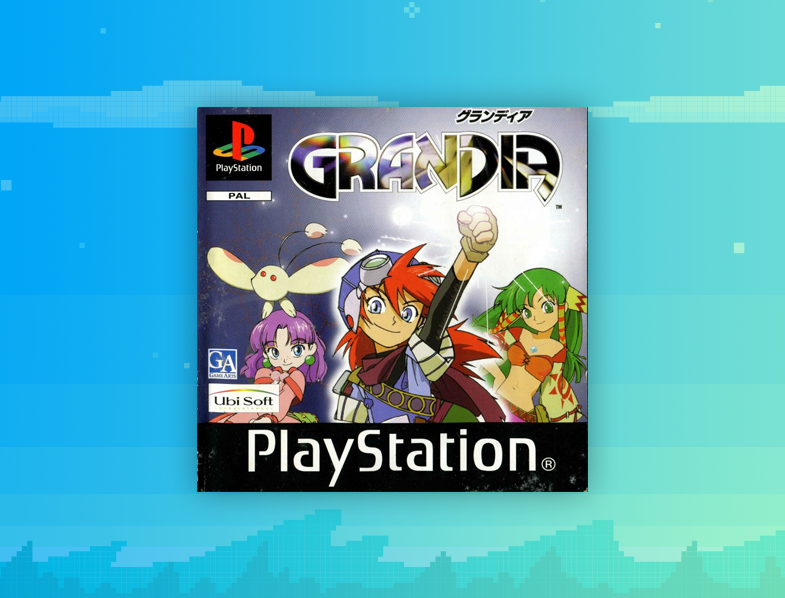
Grandia is an RPG developed by Gamearts and released for the Sega Saturn in 1997. Despite the game being developed for a dying system, it was released in the US two years later as a PS1 game due to a collaboration between Gamearts and SCEA. The game has been praised as a classic and has been compared to the iconic RPG, Final Fantasy VII.
The battle system in Grandia is considered one of the best in the industry with a real-time action RPG feel. In battle, there are no random encounters, and the enemies can be seen in the environment. The IP gauge displays icons for each character and enemy and determines when each can act in battle. The system allows for strategy and depth as players can see what the enemies are doing and perform critical or special moves to cancel their attacks.
8. Valkyrie Profile
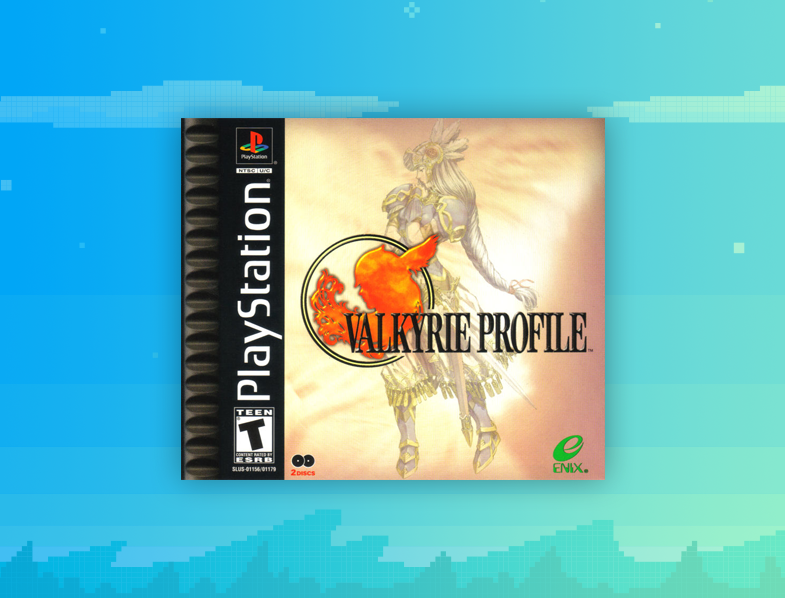
Valkyrie Profile is a classic RPG for the Sony PlayStation 1 (PS1). It is well-regarded for its unique storyline, combat system, and character development. The North American PS1 version of the game is considered the best due to its high level of localization and attention to detail.
This version features fully-voiced cutscenes and a well-translated script that immerses players in the game’s world. The English voice acting and sound effects are also well-done and enhance the game’s overall experience. Despite numerous releases and ports to modern consoles, the North American PS1 version of Valkyrie Profile remains the preferred choice for many fans of the game. Even the recently released Valkyrie Profile: Lenneth on the PlayStation 4 / PlayStation 5 is inferior to this PS1 version.
9. Xenogears
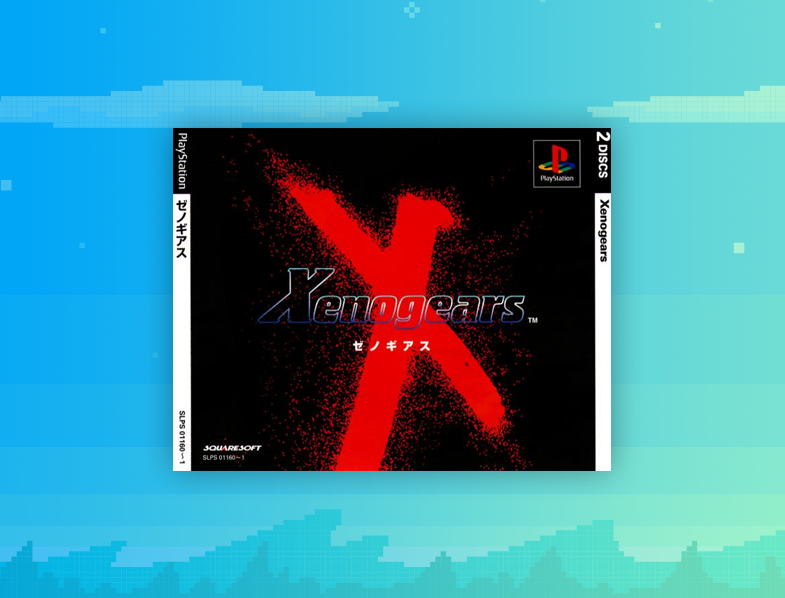
Xenogears is an RPG developed by, guess who, Square and released on the PlayStation in 1998. The game is well-regarded for its intricate story, which blends science fiction and religious themes, and its innovative combat system, which combines traditional turn-based battles with mechanical “gear” combat. The character designs and soundtrack are also highly praised.
However, the game was subject to extensive censorship and cutscenes were removed in the North American release, causing some fans to argue that the original Japanese version is superior, hence emulation is the solution to experience the game as it is intended. Despite this, the North American version remains a classic and is still highly regarded by many players today, the censorship does not diminish the quality of the game as a whole.
10. Star Ocean: The Second Story
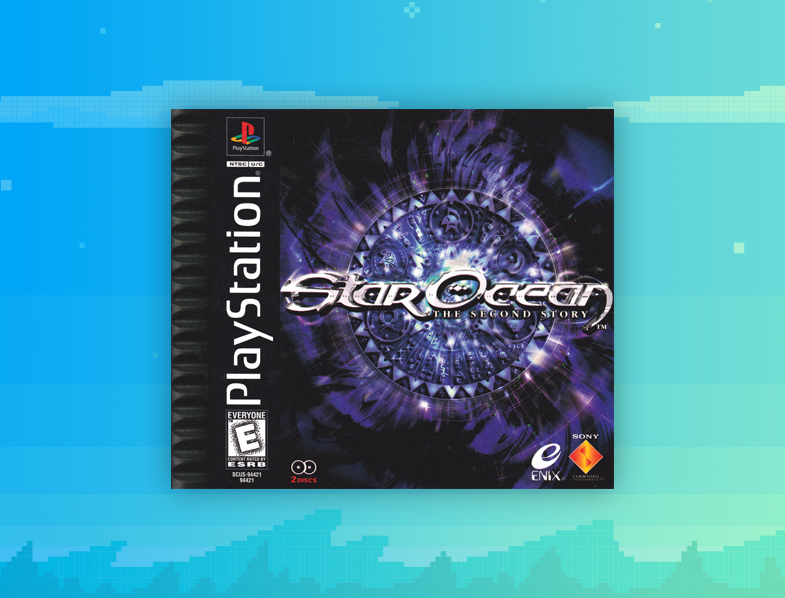
Star Ocean: The Second Story is another classic RPG developed by tri-Ace and published by Enix for the PlayStation console. This game features a vast, beautifully crafted world filled with interesting characters, lore, and breathtaking landscapes.
Star Ocean: The Second Story’s real-time battle system is fast-paced and engaging, with a mix of physical and magical attacks, special skills, and combinations. This features a deep and rewarding character development system, where players can choose to specialize in a wide range of skills and abilities. The game’s story is complex and well-written, with multiple endings depending on the choices made by the player.
11. Final Fantasy VIII
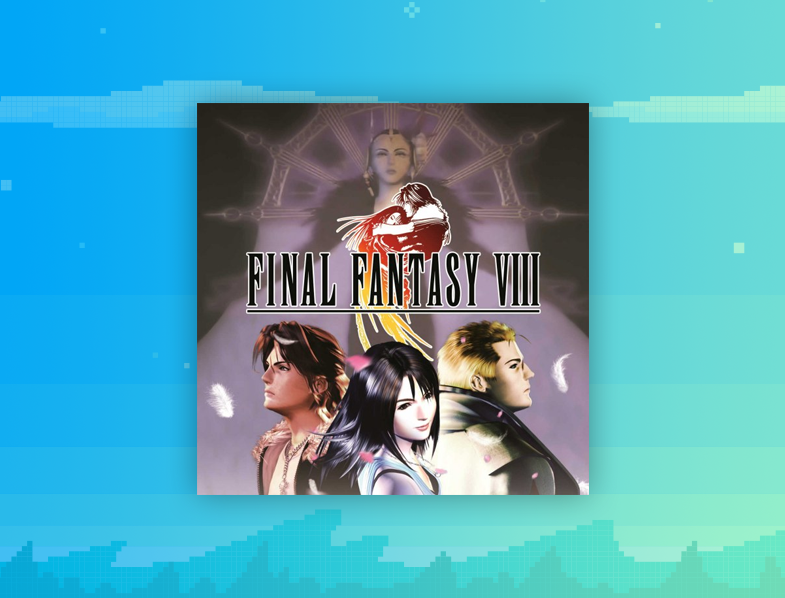
Final Fantasy VIII is a turn-based RPG that maintains the traditional elements of the Final Fantasy franchise, but also introduces new and innovative mechanics that make the game more engaging and interactive.
One of the biggest changes in VIII from VII is the way it handles magic and summons, which affects every aspect of the game. In VIII, players can only use abilities if they have a Guardian Force (summon) junctioned onto their playable character, and magic is obtained by “drawing” it from enemies. This adds a new layer of strategy as players must constantly scan enemies for new spells that could help them. The draw system also factors into world exploration, as players can find draw points where they can extract magic.
12. Legend of Legaia
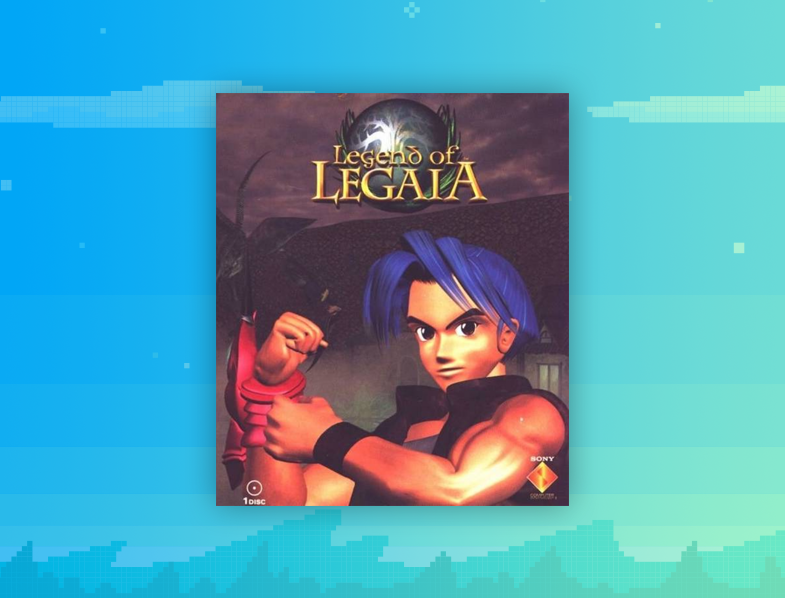
Legend of Legaia is a role-playing game developed by Contrail and published by Sony in 1998 for the PlayStation. The game offers an interesting take on the traditional RPG formula with a unique combat system and spell-learning mechanics, but it falls short in some areas.
The game’s story is set in a world where humans use magical creatures called Seru to build their civilization and gain more power. However, a terrible mist spreads across the land and corrupts the Seru, causing them to turn against their human masters. The mist leaves humanity with only a few pockets of civilization struggling to survive.
One of the game’s standout features is its unique combat system. While the game still uses the turn-based RPG mechanics, players can input different combinations of directional buttons to perform different attacks. These combinations can also be used to execute powerful Arts, which require attack points from each character.
The spell system in the game is also unique. Instead of learning spells from leveling up, the characters must defeat Seru in combat to learn new spells. The spells become more potent with usage, with some requiring several uses to level up.
13. Tales of Eternia / Tales of Destiny II

Tales of Eternia / Tales of Destiny II is an action RPG game for the PlayStation 1, developed by Namco. It is the last installment of the “Tales of” series for the original PlayStation.
The story is lighthearted but still has serious moments and is handled nicely by Namco. The gameplay is similar to Star Ocean 2, with real-time battles that are reminiscent of Streetfighter Alpha and Tekken. You can link basic slash and thrust moves with skill arts to form high-hit combos. The battle system is brilliant, with summons like Ifrit and Undine adding to the excitement. Mini-games and side quests keep you busy between battles and story, and cooking meals with helpful status effects adds a unique touch.
The game has all the elements that make an RPG an RPG, like treasure chests, leveling up, dungeon walking, field maps, items, armor, weapons, and special items. The music is very nicely done, and each area is matched perfectly with a track, while the sounds are good and solid. The voices, however, are not great, as the way the characters read their lines lacks emotion.
14. Tales of Destiny
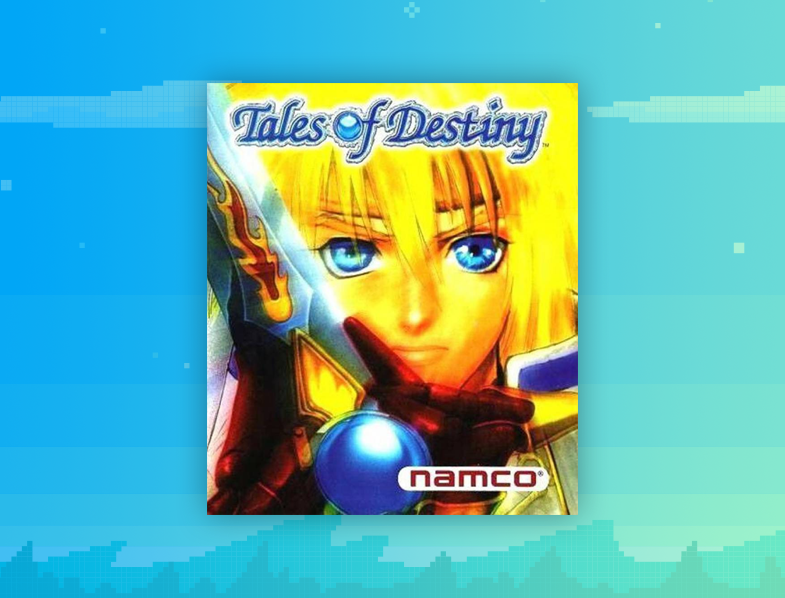
Tales of Destiny is a role-playing game developed by Namco and released for the Playstation. It is a sequel to the classic Tales of Phantasia for the Super Famicom and is often considered one of the top 10 role-playing games on the Playstation. Despite its popularity among fans, however, Tales of Destiny falls short of being the groundbreaking game that some claim it to be.
The storyline of Tales of Destiny revolves around a conflict between several empires fighting for world domination. The main protagonist, Stahn, is caught in the middle of this conflict and used as a puppet to help one of the more benevolent empires defeat the evil ones. While the storyline is deeper than the average save-the-world plot found in most role-playing games, it still falls short of being a classic due to its linearity.
While Tales of Destiny is a fun game, it falls short of being the classic that some fans make it out to be. It has its flaws, such as the poor world map design and linear storyline, but it is still a solid game with impressive battle graphics and sound effects. For fans of the Tales series, it is definitely worth playing, especially as a lead-in to its far superior sequel, Tales of Eternia.
15. Lunar 2: Eternal Blue Compilation
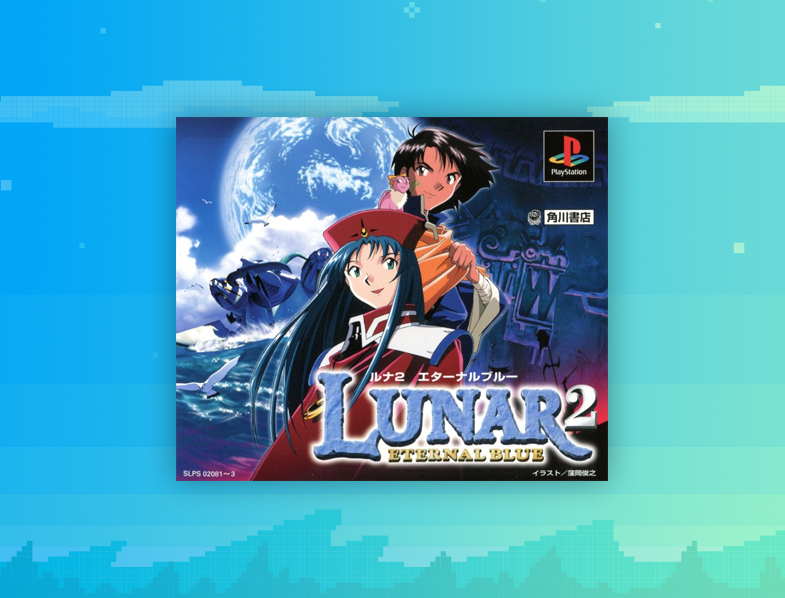
The Lunar series of role-playing games have been around for quite some time, and they have seen a number of different versions and releases across different platforms. The original Lunar: Silver Star and Lunar: Eternal Blue were released on the Sega CD, and while they were popular, they didn’t receive much recognition due to the poor market penetration of the console. The games were later remade for the more popular Sega Saturn as Lunar: Silver Star Story and Lunar: Eternal Blue, but they still received little recognition.
However, everything changed in 1998 when a small company called Working Designs decided to remake the remakes and give them a little tune-up in the process. The result was Lunar: Silver Star Story Complete (SSSC), which was released to overall excellent reviews. Working Designs put a lot of love and attention into their games, and SSSC came packed with a variety of extras, including a hard-cover manual, a soundtrack, a cloth map, and a making-of disc.
Two years later, Lunar 2: Eternal Blue Complete followed, and it also received positive reviews. The presentation was just as nice as SSSC, and it even came with an Omake (extras) box that included little cardboard cut-outs and a full-size replica of Lucia’s pendent.
When it comes to the graphics, those who have played SSSC will know what to expect. Given that Lunar 2 is a remake of a remake of a Sega CD game, the graphics are straight from that era and don’t compare well to today’s games or even to games of the 32-bit generation. The game features small, pixelated sprites that are your characters wandering around environments that are nicely detailed. The battle sequences also feature similar sprites facing off against enemies, with the enemies being big enough to look half-decent. However, your characters still look like they came straight out of an NES game.
While the graphics might not be great, the game does have newly-added anime cutscenes that showcase important events in the game and give you an idea of what the characters are supposed to look like. The sound in Lunar 2 is not as impressive as the soundtrack in SSSC, but there are still a good number of catchy tunes, and the voice acting during battles, cutscenes, and other important story bits is professionally done.
When it comes to gameplay, Lunar 2 does not stray far from its roots. The formula is largely unchanged from the last game, and those who have played SSSC will be able to jump right in without a hitch. The game is a traditional, turn-based JRPG, where you move from town to town and explore dungeons in between, fighting enemies as you go. The game uses a method of battles that shows enemies on the dungeon map, rather than the usual random encounter method, and this gives the game a unique feel compared to other RPGs.
Lunar 2 is a decent game, but it does not measure up to its predecessor, SSSC. However, it still stands on its own merit, and those who enjoy extremely traditional, turn-based JRPGs will likely find it to be an enjoyable experience.
16. Wild Arms 2
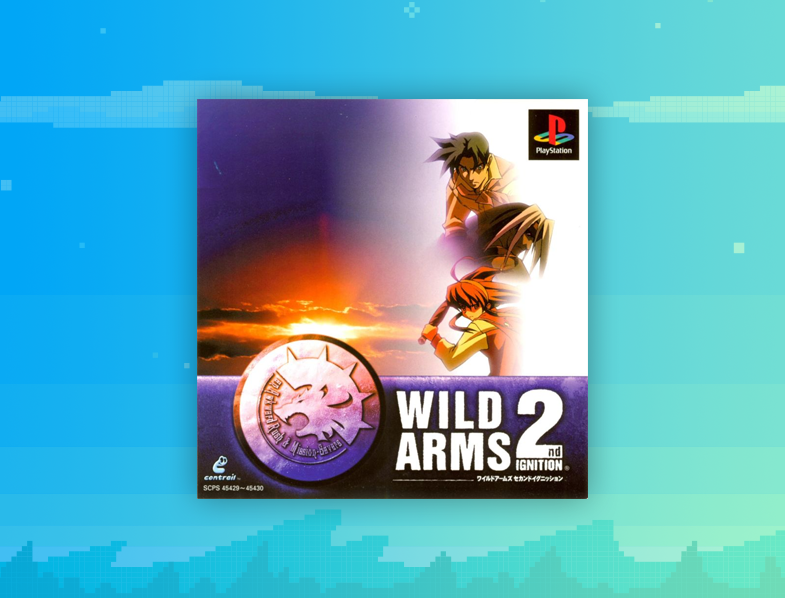
Wild Arms 2 has a steampunk, sci-fi Western setting that is rarely taken on by JRPGs and takes place in the world of Filgaia. The game’s plot revolves around the issue of borders and features good and bad guys who have different ways of dealing with the issue. The game also focuses on the meaning and nature of weaponry and the concept of sacrifice.
The game has improvements compared to the first Wild Arms game in terms of puzzle-solving as a part of dungeon exploration, and each playable character acquires a total of three tools that can alter certain parts of the environment in specific ways. The game’s soundtrack is also a highlight, as it is more of a rock-themed instead of the usual melodramatic classical instruments trying to be Bach or some Baroque composers.
17. Legend of Dragoon
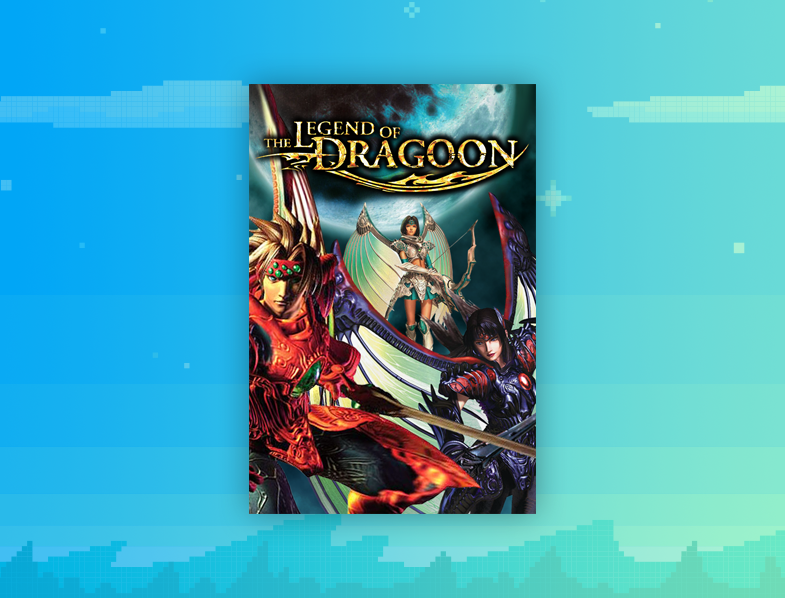
Legend of Dragoon game offers a compelling and interesting storyline, well-balanced battle mechanics, excellent music, and top-notch design, as well as 60 hours of content. Although the game had mixed reception at launch, the Legend of Dragoon actually requires actual skill to be successful in defeating enemies instead of pressing X and winning.
This game may start like your trope-heavy JRPG, you know, a humble villager with spiky hair who finds his village being destroyed and has this cutesy childhood sweetheart that believes in his pure heart and into a complex war-based plotline and into the JRPG mumbo jumbo of mysticism, there are certain plot points that incredibly well-written and handled.
The graphics, which feature detailed character models and fancy cinematic CG cutscenes, are superior to those of Final Fantasy VII but Final VIII and IX are way better. The sound effects and music are also well-implemented. The voice acting is poor in the few scenes that feature it, but since there is so little of it, it is not a significant issue.
The Addition system, which requires the player to be attentive and even makes fights against weaker enemies engaging.
Although some find the game grindy, the addition system is satisfying and requires decent hand-eye coordination. While the storyline is not as investing as that of Final Fantasy VII, the battle system is infinitely superior, and the game is well-balanced, with bosses that get increasingly difficult as the game progresses.
18. Breath of Fire IV
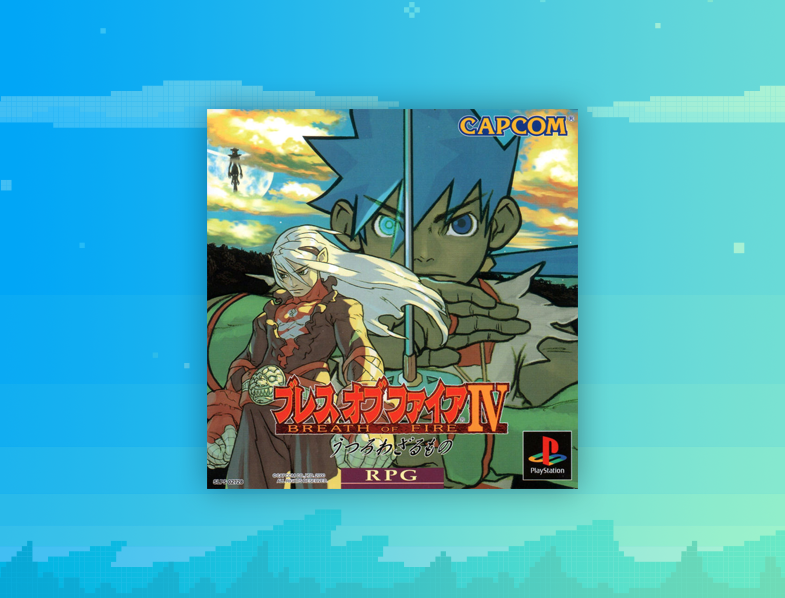
Capcom’s Breath of Fire series is one of the longest-running RPG franchises, with a history spanning over 25 years. The fourth installment of the series, Breath of Fire IV, was released in 2000 and aimed to elevate the franchise to even greater heights.
Despite its previous successes, the Breath of Fire series had experienced its share of mishaps over the years. However, the games always managed to present decent gameplay and quirky mini-games to keep players satisfied. Breath of Fire IV aimed to take the series to new heights with a vastly different battle system and a promise of an even more intricate plot. If not for one complex and crucial fault, Breath of Fire IV would have been hailed as a marvel of modern gaming.
The game’s story takes place after centuries of war between the mighty Fou Empire to the west and the Eastern Alliance of the east. After exhausting their resources due to their relentless conflict, the two continents finally agreed to a cease-fire. However, shortly after the armistice, Princess Elina from the Eastern city of Windia is abducted, and it’s up to her sister Nina to discover her whereabouts, with or without help from her country.
However, the game’s innovative battle system more than makes up for its lackluster plot. Breath of Fire IV introduces the “combo system,” which allows characters to combine their spells in succession, resulting in more powerful magic. Physical abilities can be used after elemental spells to add magical properties to attacks, and consecutive spells of the same element can add more hits. Harmonious elements can also be used to form ultra-powerful bi-elemental spells. With the innate character spells and the hundred or so learnable enemy skills, the possibilities are nearly endless.
Breath of Fire IV also allows players to interchange any of their six characters between the front and rear lines at any time which is similarly implemented in FFX. The rear attackers are shielded against attacks but can still provide cover-fire to the active party. Depending on their concentration points (CPs), characters in the back will regain temporary MP during combat, a very useful and important feature when battling tough bosses.
Masters are scattered across the world, and studying under them will change the character’s parameter increase during level-ups. They will also issue challenges to the player’s party, such as performing a 30-hit combo, gaining sufficient fishing points, or fighting enough battles, in exchange for skills.
Breath of Fire IV features a fairy village mini-game, which provides a nice diversion from the adventure. Players can set up specialty shops, play mini-games, acquire items, and more. Another series staple, the fishing game, has been reintroduced and is better than ever. Players can sell their fish to local Manillo (fish-man) traders for items and stamp cards, which they can then turn in for incredibly powerful items. It’s a very exhaustive, thorough, and well-executed mini-game.
19. Thousand Arms
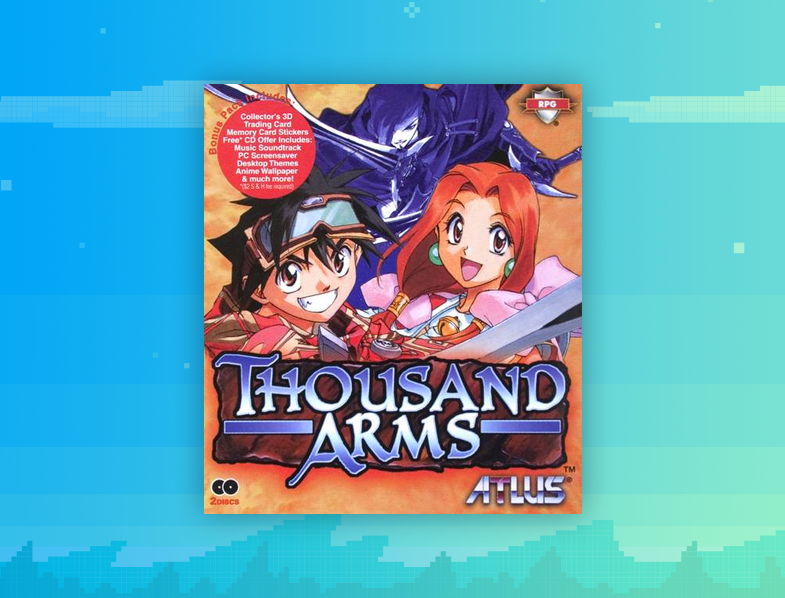
Thousand Arms is a role-playing video game released in 1999 by RED and Atlus on PlayStation. The game is known as a cult classic with a good reputation and a certain amount of mystique around it. Despite having a rather simplistic visual style, Thousand Arms features some stylistic flair such as great FMVs, Anime drawings of characters during important scenes, stylized sprites during battles, and 3D backgrounds.
The music is above average, with the intro and ending themes good enough to warrant purchasing the soundtrack. The game features more than 12 hours of voice acting, which is better than most RPGs of its time. The story is simple and clichéd, and the game follows the standard RPG format, but its characters are what make it interesting. The humor, flirtation, and wackiness of the characters create a hilarious and fun experience. The dating component of the game is unique, where dating girls increases Meis’s intimacy rating, which in turn improves his sword-forging abilities. The game has a lot of NPC dialogue and funny situations that add to the overall enjoyment.
Despite not breaking any new grounds in storytelling and gameplay, Thousand Arms has enough unique features and humor to make it a worthwhile RPG experience.
20. Persona 2: Eternal Punishment
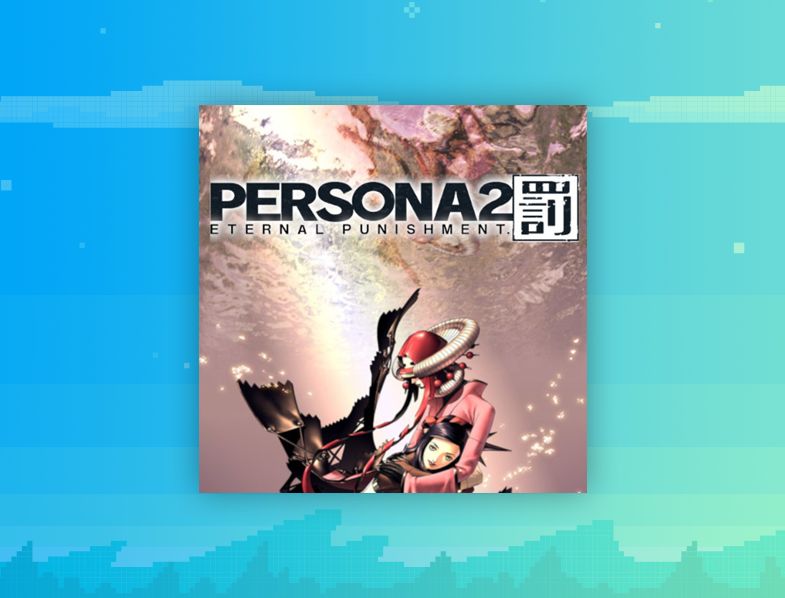
Persona 2: Eternal Punishment is a highly-regarded RPG series from Atlus, popular in Japan but less known in America (at that time of PlayStation One’s peak, obviously Persona nowadays is incredibly popular). It features top-notch elements such as plot, characters, battle system, demons, and setting, and stands out for its enthralling characters that are easy to relate to. The game starts out as a murder mystery and evolves into a story that touches on mythology, religion, science fiction, and technology.
The battle and rumor systems are unique, with each character drawing on various Personae for their powers and rumors affecting the course of the game. While the game can be slow and time-consuming with the horrendous random battle frequency, its characters and plot make it worthwhile.







![Breath of Fire III - (PS1) PlayStation 1 [Pre-Owned]](https://m.media-amazon.com/images/I/51U+nQAMcIL._SL500_.jpg)









![Tales of Destiny - (PS1) Playstation 1 [Pre-Owned]](https://m.media-amazon.com/images/I/41wsM7ylZUL._SL500_.jpg)






